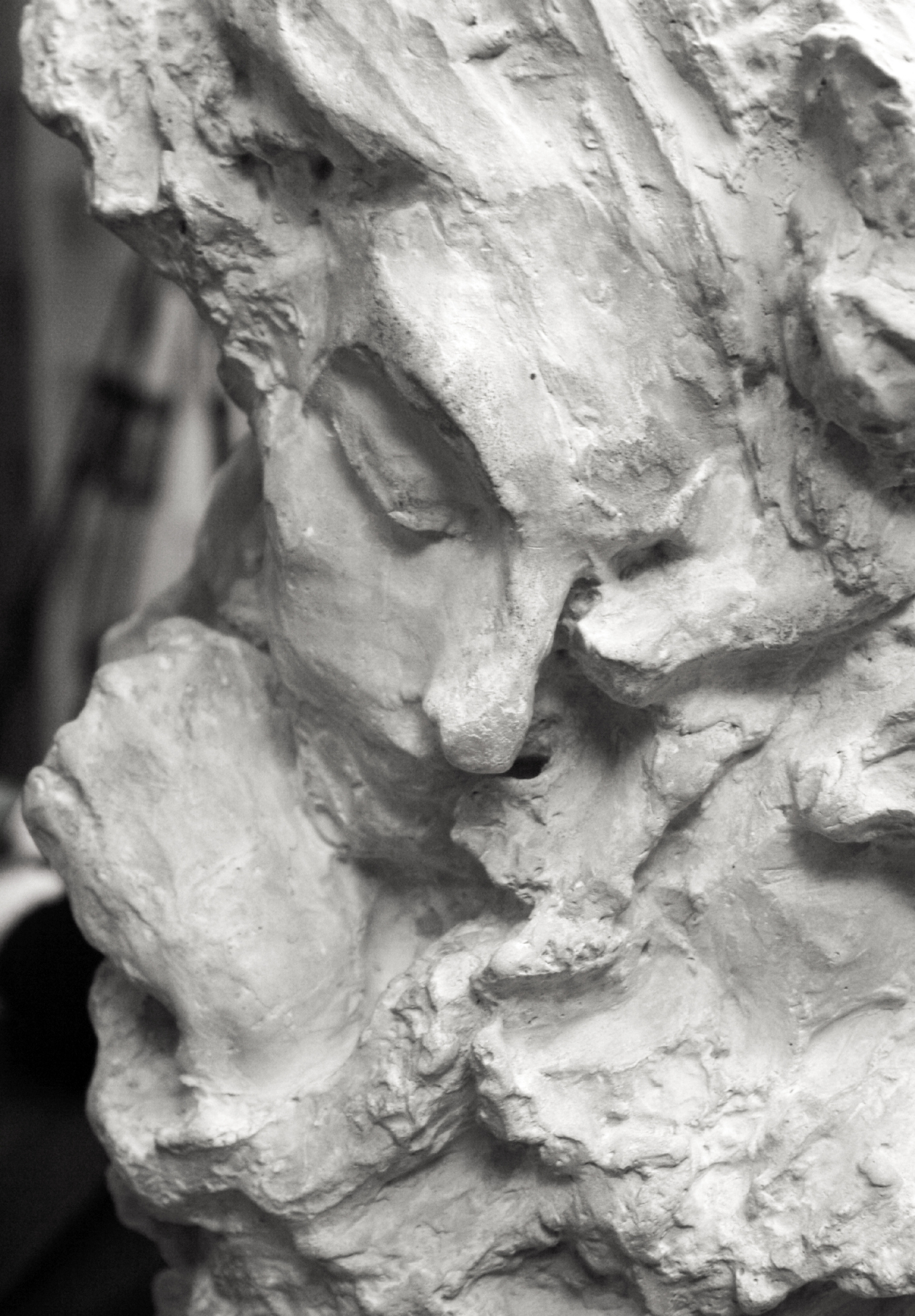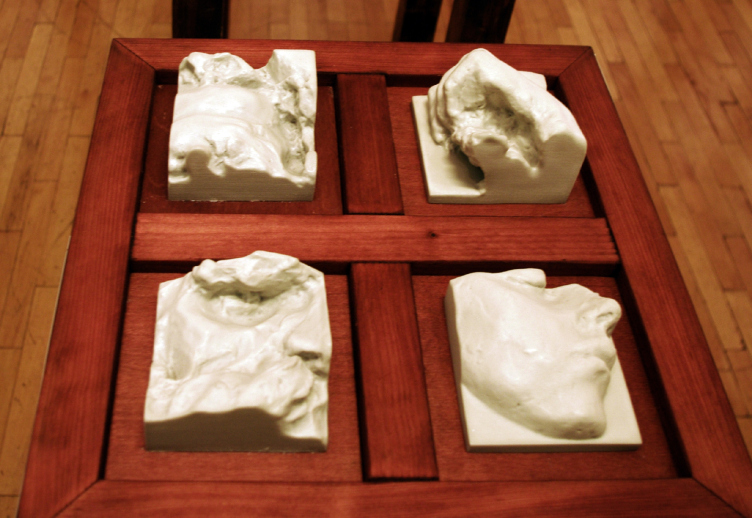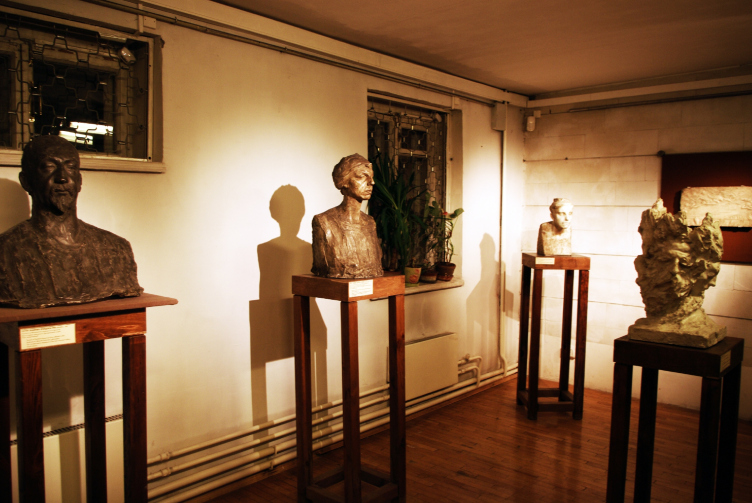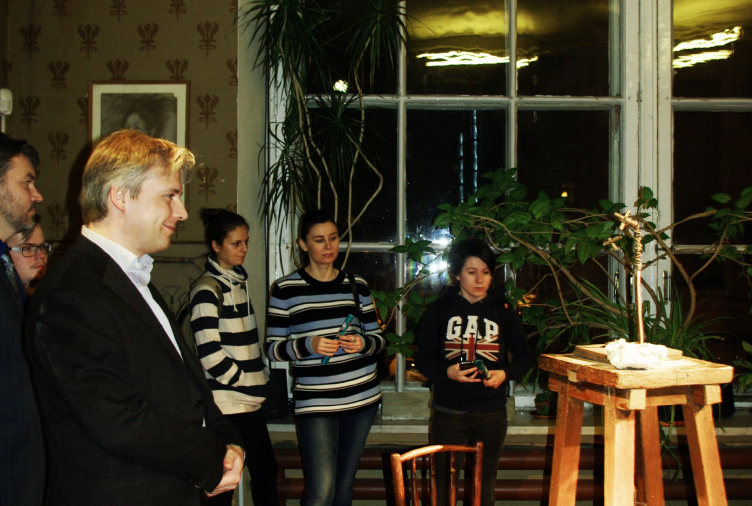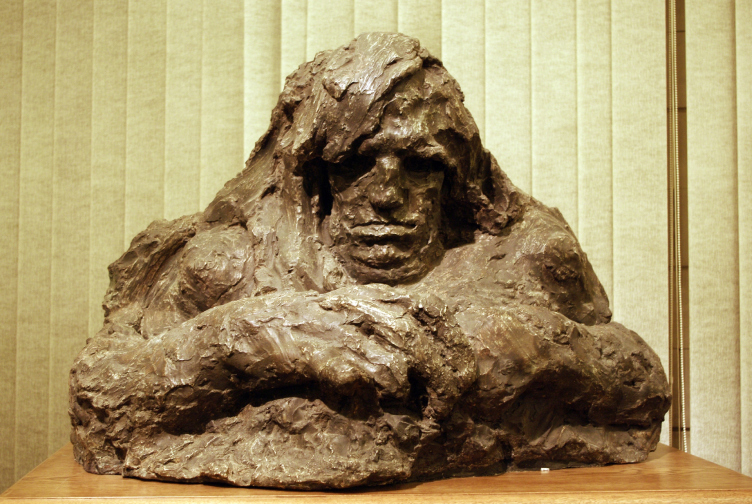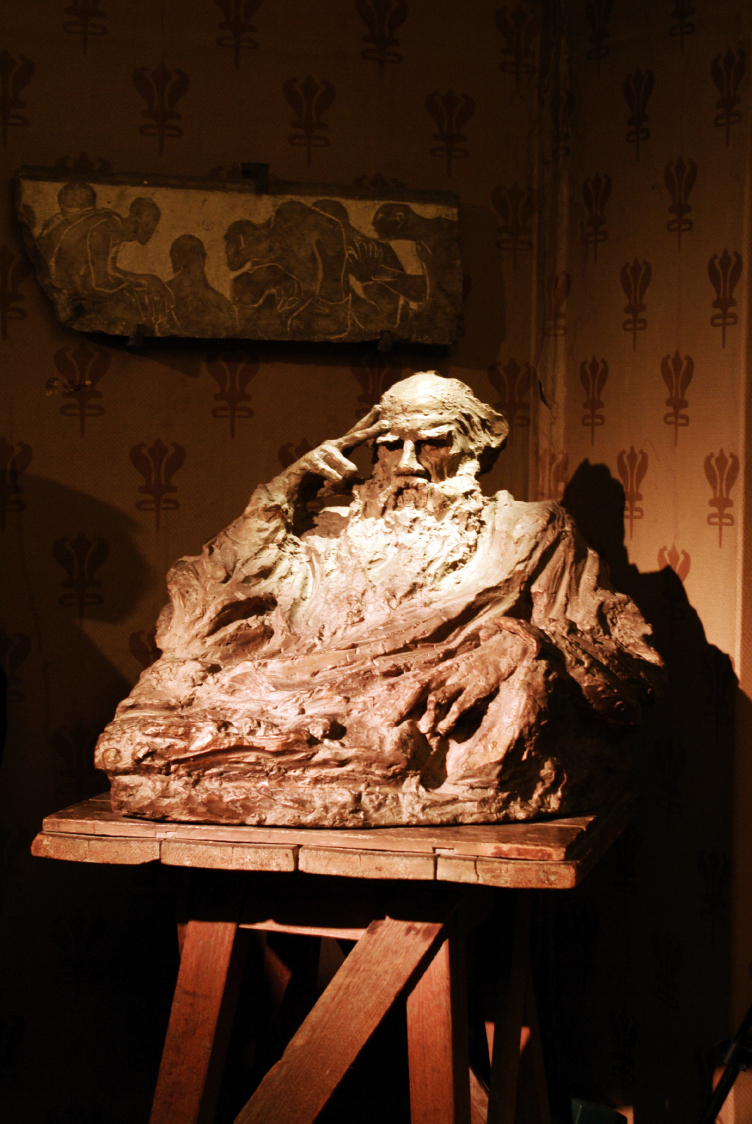Museum of Anna Semyonovna Golubkina – a part of the Tretyakov Gallery – is located on Lyovshinsky lane, not far from Old Arbat. The entrance is in the yard, behind a massive door – the atmosphere of an art studio of the Silver Age; in the hall, you can see shots chronicle with Moscow and Paris of the 20th century and Auguste Rodin – Golubkina’s teacher. The guests receive an amusing guidebook based on the letter of Golubkina to her friend, mentioning her places of interest – there, we learn where Rodin’s workshop is (now a museum as well), and also that Anna Semyonovna would not recommend visiting zoological gardens.
The exhibit that sums up the most famous and expressive works of the sculptor takes up two floors. The first floor reminds of a more traditional exhibition area: two spacious halls, soft light, evenly distributed sculptures that one can observe all around, even museum attendants, cautiously watching over maintenance of order and silence are the same as everywhere. But, unlike a standard exhibition where you are expressly prohibited to touch the exhibit-items, here the guests have a unique opportunity of getting a tactile notion of the art works and technique of the sculptor. For this purpose, two Golubkina’s works have been reproduced with the modern technology of 3D-printing.
Next to the vase “Mist” – one of the most famous works – there is a tactile panel with exact replicas of the sculpture’s fragments. As envisioned by the author of the idea and a co-curator of the exhibition, head of Mezonproject architectural bureau, Ilya Mashkov, by touching the fragments one can get a deeper understanding of how the artists worked, what he thought about while creating the works. The second tactile panel is placed by the portrait sculpture of the writer Alexey Remizov, and demonstrates the sculptor’s technique. It was not that easy to come around and touch each of them on the day of the openning: inspired by the idea, the visitors stood in lines, touched the fragments, reflected for a while, went away, and came back again.
Fragmanet of "Mist" vase. Sculpture by Anna Golubkina. Photo by Alla Pavlikova
Tactile panel with the fragmanets of "Mist" vase. Sculpture by Anna Golubkina. Photo by Alla Pavlikova
The second floor of the museum is a workshop with a huge floor-to-ceiling window and a small memorial room where the organizers of the exhibition tried to recreate the exact atmosphere of that time. This room is very quiet and is the only place with almost no sculptures. The main action takes place in the workshop. Despite its modest sizes, the room itself creates a magical impression – the darkened wall-paper, high ceiling covered in cracks with age and with a square roof monitor, and all around are the sculptor’s works. Executed in different techniques, made of stone, marmor, wood, they are everywhere on the shelves, and tables by the walls, on the window-sill, chairs, emerging in the center of the room leaving narrow labirynth for the visitors to move around.
Exposition in the studio museum of Anna Golubkina. The first floor. Photo by Alla Pavlikova
The special illumination helps the visitors not to feel at a loss or miss something important. The spotlights installed under the ceiling direct bright light beams successively onto different sculptures drawing the visitor’s attention to them. This develops another aspect of the project – “See”. The visitors get completely immersed and engaged in the creative process (which is exactly what the exhibit organizers aimed for) thanks to the elucidative audio surrounding: the guests hear extracts from Anna Golubkina’s letters, her dialogs with colleagues and friends, read by the historian-medievalist, lecturer Nataliya Ivanovna Basovskaya. In this manner, the “See” and “Hear” aspects of the project are revealed.
On the day of the exhibit openning, we had an interview with its curator, head of Mezonproject workshop – Ilya Mashkov:
Anna Golubkina's studio. On the photo: curator of the exhibition Ilia Mashkov. Photo by Alla Pavlikova
“It all started with our participation in the exhibition “ARCH Moscow-2015” where our workshop presented an unusual stand: we offered to the visitors to experience architecture with all the sense organs. We made something absolutely intangible – a creative idea – possible to touch, hear and see at the same time. The guests enjoyed our stand very much then and gladly participated in the experiment. Our work drew the attention of the workers of Anna Golubkina’s museum who invited me together with Tatyana Galina to be curators a special project “Touch + See + Hear = Feel”.
I think that our method of engaging all sense organs is very well suited for such expressive works of art. It is very hard to translate their expression to a large mass of people in some other way. The visitors come but not always fully relate to what they see and leave too soon, before they could get filled with the genious of Golubkina’s art that has no analogues in the world. She is Rodin’s pupil but at the same time: completely different, unlike anybody else. Her work was incredible and she expressed everything what she felt inside through clay. It was her emotional experience – as feelings of a creator, genious, a person of her era and a big artist – that we tried to show at the museum exhibit. It was very challenging because Anna Semyonovna was an unusual person – very alive and energetic, straight-forward and original. She only worked with the images that were really interesting to her. For example, she was delighted to sculpt Andrey Bely, but flatly refused to work with the figure of Sergei Yesenin. She saw and felt the world and people around her in her own way. This was the aspect that was so hard to explore within such a small space of her workshop. As an architect, I had a task to create the impression of extension of space despite the large amount of sculptures, and make sure that no item would get lost amid the others.
"Earth" sculpture by Anna Golubkina. Photo by Alla Pavlikova
The most emotional works are presented inside the exposition. For example, the portrait sculpture of Remizov. Looking at it you realize that he has absolutely true skin, real maustache and his coat is almost tangibly soft. You walk around it and you think – how was it possible to animate a lifeless material by means of sculpture? So that you could answer this question, we installed a tactile panel by the sculpture and chose the most interesting fragments touching which you start to understand how it was done. It includes Remizov’s ear made with a single movement of three fingers. Golubkina simply took the clay, pressed on it with three fingers – and you see an ear, brushed with her hand across the neck – and a collar turns around it, made a few skilled movements – and the writer’s face is alive. It is impossible to understand it without touching it. That is why, coming to the exhibition it is absolutely necessary to touch the fragments with your hands and concentrate on your feelings trying to image yourself in place of the sculptor, understand how the visible effect was actually achieved. The aspect of touching opens a new additional way of perception of art.
Sculptures by Anna Golubkina. Photo by Alla Pavlikova
Furthermore, we tried to accent each sculpture with light, getting the audience to turn their focus from one item to another. Besides the light, we also use sound. Nataliya Basovskaya agreed to voice Golubkina’s letters. And I think that it was a success. I listened to many actors, men’s and women’s voices but I could not find the right one. There was an incredible depth in the voice of Anna Semyonovna. I heard such depth in the voice of Nataliya Ivanovna who read all Golubkina’s lines practically in one breath. The recorded voice is aired non-stop. We intentionally added an indicator of Golubkina’s age so that whenever the guests came in – they would understand the context right away and listen to all the audios to the end. You can also compare your own feelings and perceptions in different ages with the reflections shared by Golubkina. For example, when she is 40 years old she admires marblers and dreams to learn something from them. In her 30s, she does not want to listen to her teachers and insists on working in her own manner. When she is 60, she is preoccupied with the sculpture of Lev Tolstoy that does not come out well because the writer has the eyes of a “coursed wolf”. She does not change with age and remains a very active and energetic person.
I think that with the simplest technical means we have managed to expand the space of the small workshop and achieve full involvement of the audience”.
The bust of Leo Tolstoy. Sculpture by Anna Golubkina. Photo by Alla Pavlikova
The exhibition is open up to January 31. The building of the museum is planned to be completely renovated by 2017, so the exposition is also a chance to see the workshop of this amazing sculptor practically in pristine condition.

